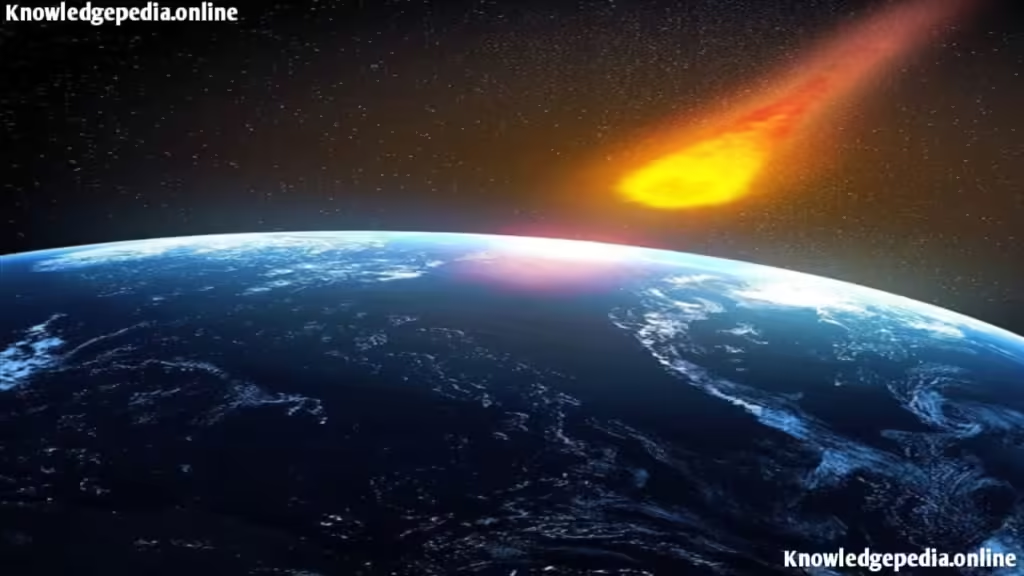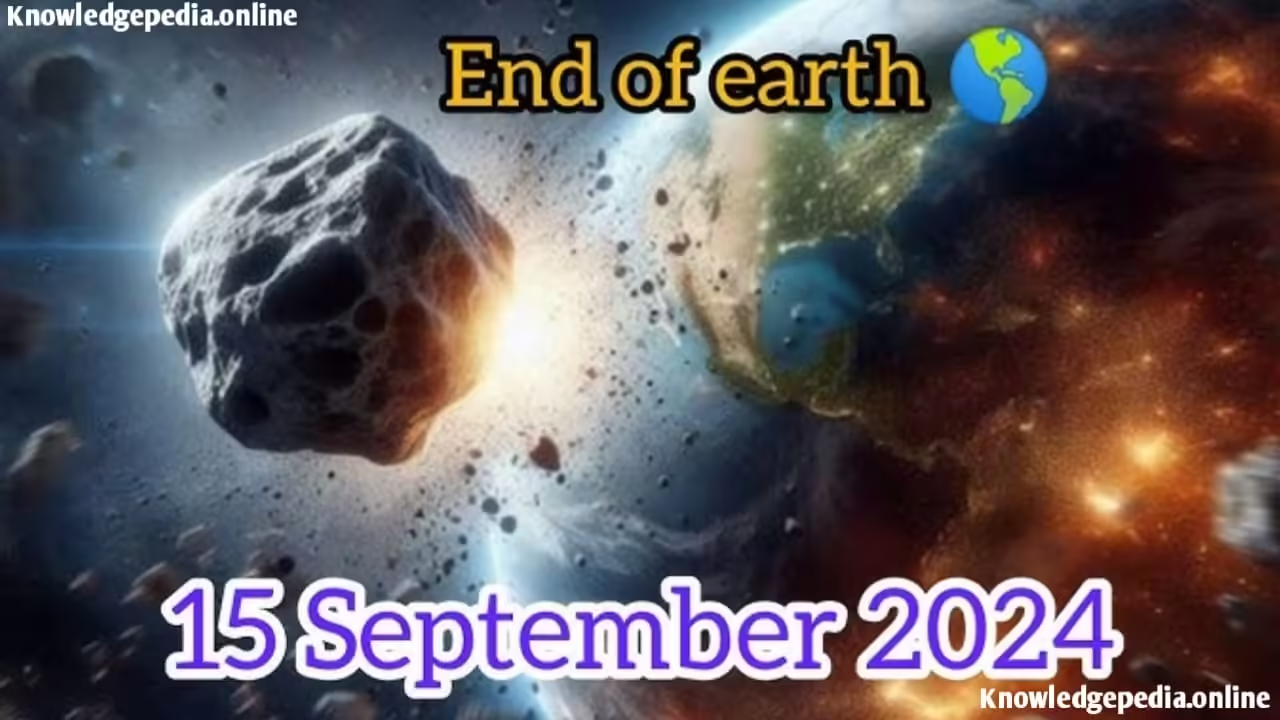Table of Contents
NASHA WARNS OF ASTEROIDS HEADING TOWARDS EARTH:NASA’s Jet Propulsion Laboratory (JPL) is gearing up for a cosmic event. On 13 September 2024, two asteroids, 2024 RZ10 and 2024 RZ10, will make close approaches to Earth. While it may sound like a space thriller, there’s no cause for alarm. These asteroids will safely pass our planet, allowing scientists to study them up close 2024 RZ10: A Large Asteroid with No Risk The National Aeronautics and Space Administration (NASA) has recently issued a warning about a massive asteroid speeding towards Earth at an alarming rate.

This giant asteroid, 2024 ON, has a diameter of 720 feet (roughly bigger than the size of two cricket pitches) and is expected to pass close to Earth on September 15, 2024.The Planetary Office plays a key role in identifying and tracking near-Earth objects and developing strategies for deflecting or mitigating potential impacts.
Researchers from the European Space Agency (ESA) and various universities are working with NASA to study the composition of asteroid 2024 ON. These efforts intend to uncover more about the material that formed these celestial bodies and provide insights into the early solar system.NASA is providing updates and information via its website and social media platforms. The asteroid’s approach will be visible from the Northern Hemisphere and can be watched live via the Virtual Telescope Project.
The close approach of the asteroid highlights the importance of global cooperation in space exploration and planetary defence. Countries are increasingly recognising the significance of collaborating to handle the possible risks posed by near-Earth objects.The collaborative mission, like the Asteroid Impact & Deflection Assessment (AIDA) mission, which involves NASA and ESA, is important for developing effective protection strategies.As September 15 draws near, scientists and researchers will continue to monitor the asteroid and collect data which advances our understanding of the universe and the dynamic processes shaping it along with safety.This kind of asteroid provides valuable insights into the history and forces of our solar system over billions of years
about asteroids
NASA’s JPL remains vigilant, continuously tracking potentially hazardous asteroids. This meticulous monitoring helps ensure our safety and offers valuable opportunities for scientific research. By studying these ancient space rocks, scientists gain insights into the early solar system.While the approach of 2024 RZ10 and 2024 RZ10 might spark curiosity, there’s no need for concern. Both asteroids will pass safely, enhancing our understanding of near-Earth objects and their celestial paths.

The first asteroid, 2024 RZ10, measures about 110 feet across. It is classified as potentially hazardous due to its size and speed. However, there is no danger to Earth. It will pass at a safe distance of 3,330,000 kilometres, well beyond the Moon’s orbit.
Size: 110 Feet (Similar to a Small Airplane)
Closest Approach: 3,330,000 Kilometres
Date: 13 September 2024
2024 RZ10: A Smaller, Safe Visitor
The second asteroid, also named 2024 RZ10, is smaller at around 44 feet in diameter. It will come closer than its larger counterpart, passing within 1,150,000 kilometres of Earth. Despite this proximity, it poses no threat to our planet.
Size: 44 Feet (Comparable to a Small Airplane)
Closest Approach: 1,150,000 Kilometres
Date: 13 September 2024
Observational Insights and Scientific Value
Although asteroid 2024 PT5 will be too dim to be seen with the naked eye or most amateur telescopes, it will be visible to advanced observatories. According to the American Astronomical Society, “Near-Earth objects (NEOs) that follow horseshoe paths, and approach our planet at close range and low relative velocity, may undergo mini-moon events in which their geocentric energy becomes negative for hours, days or months, but without completing one revolution around Earth while bound.” This temporary capture provides valuable data for astronomers, aiding in the refinement of gravitational models and improving predictions for asteroid behavior near Earth.

The phenomenon of temporary moons is not new. Earth has experienced similar events before, such as with 2022 NX1 in 1981 and 2022. Mini-moons like 2024 PT5 are significant for asteroid mining and space exploration, as they are relatively close and accessible for missions aimed at studying or acquiring asteroid resources. “Every time they’re talking about asteroid mining, they talk about mini-moons,” said Federica Spoto, an asteroid dynamics researcher at the Center for Astrophysics, Harvard & Smithsonian. Spoto added, “It is pretty cool,” emphasizing the importance of these observations in understanding near-Earth space rocks
The asteroid’s potential origin adds a fascinating aspect to its story. Paul Chodas, director of the Center for Near-Earth Object Studies at NASA’s Jet Propulsion Laboratory, suggested that 2024 PT5 might be a fragment from an impact on the moon. Despite this intriguing possibility, Lance Benner, principal investigator of the asteroid radar research program at the Jet Propulsion Laboratory, noted that 2024 PT5 will not complete a full revolution around Earth and, thus, might not qualify as a true mini-moon. “It certainly won’t complete one full revolution in the Earth-moon system this fall, so I’m not sure I would classify it as a mini-moon,” Benner said.
A scientific opportunity to save the Earth
2024 RN16 belongs to a group of near- Earth objects called Apollo asteroids. These asteroids have orbits that cross Earth’s path around the Sun, making close approaches possible. They are named after the first discovered asteroid of this group, 1862 Apollo. NASA monitors Apollo asteroids because of their potential to intersect with Earth’s orbit.If an asteroid the size of 2024 RN16 were to hit Earth, the impact would be extremely destructive. It is estimated that if the asteroid entered Earth’s atmosphere, it would explode 29 kilometers above the ground, releasing energy equivalent to 16 megatons of TNT. This explosion would cause a significant shockwave but would not cause a direct ground impact. Such an event is expected once every 990 years. Fortunately, 2024 RN16 will pass by Earth safely without causing any harm.

The discovery of 2024 PT5 highlights the importance of monitoring near-Earth objects. Planetary defense researchers are primarily focused on identifying larger asteroids capable of causing significant damage, but smaller asteroids like 2024 PT5 also pose potential risks. “There’s a pretty busy highway around the Earth,” Spoto noted, emphasizing the need for comprehensive tracking of all near-Earth objects to safeguard our planet.
The temporary capture of asteroid 2024 PT5 offers a unique opportunity to study near-Earth objects and their interactions with our planet. As it makes its brief journey around Earth, it will contribute valuable insights into asteroid dynamics and future space exploration possibilitiesNASA’s Center for Near-Earth Object Studies (CNEOS) monitors asteroids and comets to assess their impact risk. Data from worldwide observatories and amateur astronomers help track these objects’ paths. The Minor Planet Center gathers this information, while programs like Pan-STARRS and NEOWISE provide detailed observations. Planetary radar systems like the Goldstone Solar System Radar help refine asteroid trajectories
- why Taliban say I love Hindustan - September 19, 2024
- International Day of Peace 2024 - September 18, 2024
- International Equal Pay Day 2024 - September 17, 2024
